
Check out John McGuire’s The Gilded Age steampunk graphic novel on Kickstarter!
The Universal Monster movies are really what introduced me to those creatures of the night. And while I’m probably most partial to the Creature movies, I loved Frankenstein, Dracula, and the Wolf Man. It not only set them in popular culture but also provided a blueprint on how you might go about using them in other formats.
Add that to a Steampunk setting and you have something that seems to hit all the right buttons.
***

How long have you been creating/working in comics?
I had published a few short comics stories in anthologies before my first one-shot came out in 2015. That comic is called Wild Bullets, and it follows the four siblings of the Bullet family as they attend their parents’ Thanksgiving dinner. They each take a turn telling the story, and when they do, a different artist handles each section in a different genre and style (crime, science fiction, adventure, and horror). They’re all dysfunctional pulp adventurers: a detective, a mad scientist, an archaeologist, and a monster hunter.
Since then, I’ve published several issues of Monstrous and Holliston: Friendship Is Tragic. Monstrous is a fun romp where the stories all take place in a steampunk, Frankenstein-dominated Europe. The monsters and robots fight for their own interests, and everybody is a little bit monstrous.
The Holliston graphic novel is based on the cult TV show by Adam Green, but it’s not just for fans of the show. The basic idea is that it’s like The Big Bang Theory, except for horror nerds. There are references to Stephen King, serial killers, and John Carpenter movies. The story tells about four friends who find a cursed credit card that threatens to destroy them, destroy their friendship, and destroy the town of Holliston itself. There is a new Holliston comic on the way, and more Monstrous will be out soon!
At what point did you sit down to become a writer? Do you remember the first thing you wrote?
I have written allllllll kinds of garbage in my life. I literally do not remember what it was like before I was writing. I wrote comics and illustrated stories as a kid, mostly ripping off the stuff I liked. That method is still pretty much what I do. People who read my comics probably think: “Oh, I bet he likes ______ because he stole ______ from…” And they’d be right. All creators are thieves!
I taught screenwriting for a couple of years at Kalamazoo College, and I wrote movie scripts then. Comic book scripts are much more likely to be made into something than movie scripts, so I tried that out. I really love collaborating with the great artists I get to work with, and being able to share a comic with someone is very, very cool.
Who inspires you? Or do you have a favorite writer or creator?
There are scads of creators I could point to: Alan Moore if I’m feeling a little pretentious, Rick Remender if I’m being honest, etc.
But I figure I should use this venue to give a shout-out to someone who might not be a household name yet but deserves to be. I’ll say Ryan Ferrier. He is a comic book writer in a variety of genres working with lots of companies, but his D4VE series and Hot Damn are just a bunch of fun, taking weird premises and wringing every last little bit of lunacy out of them.
If you haven’t read his stuff, fix your life right away, folks. (He also wrote the forthcoming Kong on the Planet of the Apes, which promises to be cool, but give his original stuff a whirl, too.)
How do you manage your daily/family life with your creative work? Is this your 9 to 5 or is this your 10 to 2?
I am literally working on this response after 10:00 p.m. And on a school night, too!
I have no idea how I manage this stuff. If somebody knows, please tell me.
The upshot of working on creative stuff while having another job (I teach college English courses) is that when I come to the writing I know I need to focus because my time is limited. When I “have all the time in the world” to work on something, I tend to fart around longer on the Internet. I might claim that time as “research,” but if I do, I’m a filthy liar.
Also, my writing process is a pretty straightforward thing. I do a lot of prewriting and outlining, so I know exactly where I need to go with the story. I highly recommend this method, as it takes some of the airy-fairy, arty-farty aspects of writing out of the process. I mean, it’s not all sitting under a juniper tree on a dewy April morning to achieve the necessary inspiration or whatever. Just write the damn thing. I’ll talk more about not screwing around waiting for some idiotic celestial muse in a bit.
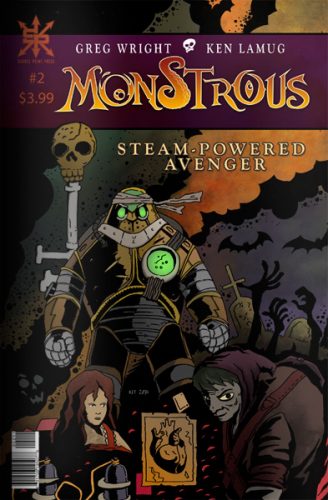
It’s often difficult to get word out about independent comics. What do you do to market and promote your books? Anything work really well or really poorly?
What works best is having really rich, organized people do it for you. But that’s not a luxury a whole lot of independent creators have at their disposal. There are plenty of tools I would recommend using, like social media, podcasts, and lots and lots and lots of face-to-face conversations with people at anything and everything related to the comic (or book or whatever the person wants to promote). Get out there and tell everyone who will listen! And, please, for the love of everything that’s holy, try to make it interesting.
This past weekend, I did a signing at Barnes & Noble, and that was sandwiched between two other weekends at comic cons (Kalamazoo and Grand Rapids). I spend a lot of time meeting people and telling them about what I have created. I’m really excited about my comics, and I hope that enthusiasm is contagious. From my perspective, nobody will ever care more or work harder to promote your work than you.
What’s your process look like when you’re writing? Do you go with the full outline? Or are you a fly by the seat of your pants type?
Oh, I don’t just have a full outline; I have a bunch of them. I like to use the screenwriting model of writing out the beats of any story, organizing it, chopping it up how it needs to be broken down to look like a story that humans can recognize. I write a logline, a synopsis, character bios, the works.
I use Blake Snyder’s beat sheet. Then I write a page breakdown. If my notes on a single page can’t fit into a single line of description, I’m probably doing too much with a single page. (Of course, I set all my rules up clearly just so I can cheat.)
My last step is actually writing the script itself. I specify the panels, camera angles, etc. Some other writers are more freeform, but I could sketch out the page breakdowns I am visualizing in my head if artists ever wanted that kind of thing. I’m open to that, but so far nobody has ever really wanted me to be that absolute with my control issues.
And the good news is that my artists (Ken Lamug on Monstrous, Steve Sharar and Josh Werner on Holliston, and Sean Seal, Steve Sharar, Jason Jimenez, Joe Freyre, and Sarah Dhyne on Wild Bullets) come up with things I never pictured throughout this process. And it’s always better than I anticipated. They’re terrific! It’s like a constant stream of birthday presents!
What inspired you to create Monstrous?
Monstrous stems from a lifelong fascination with monster movies and their misunderstood heroes. Even when they’re completing evil, monsters are always the most compelling thing about the stories they occupy. I’ve always loved the Universal Studios monsters and Ghostbusters and the Hammer Studios movies. I threw all of those influences together with plots from John Wayne westerns in this strange steampunk hybrid. Monstrous is like all of these things I’ve loved for years having a party together.
The potential of this setting and these characters really feels limitless to me. I have loads more stories in this universe than I have time to write. Frankenstein’s Europe, teeming with steampunk robots, Dracula, and Igor running tech support on brains in jars—it all just strikes a chord with me. I don’t think I know how to get bored here.
Was this a case of coming up with the story first and then the setting or vice versa?
The notion of a shared universe with monsters and robots duking it out, trying to live their everyday lives, was the initial impetus I had. I love the 70s horror comics Marvel put out about Dracula and Frankenstein. The best part, to me, was taking these characters and just logically extending their stories to see what might be interesting about them.
Eventually, they basically turned Frankenstein’s monster into Captain America, and they gave Dracula a fantastic adversary by creating Blade. Those weird changes are the kinds of things I want to do with Monstrous. Take something already established and bring a new sense of excitement and possibility. Get all the toys out of the toybox and have fun. The stories come mostly out of wanting to see something crazy on the page. I keep tossing out bizarre scenarios to Ken Lamug, and he routinely delivers on this insanity in amazing and entertaining ways.
What’s been the reaction to the book?
Most people seem to like it a lot. If they don’t, they’re too polite to tell me.
The response has been overwhelmingly positive. Monstrous seems to tap into a bunch of things that people really enjoy, and that’s why we keep making more. There are some possible developments as well to adapt it into a movie or a game. I don’t have anything definite to report, but that level of interest is very exciting!
I really like telling stories about unusual families, either “families” that are not really related but instead made up of people who need to bond with each other in order to make their lives work (as in Monstrous) or actual families that stray pretty far from how we think of families working (like the deeply dysfunctional Bullet family).
More specifically, in Monstrous many of the relationships are between father figures and daughter figures. I guess I gravitated toward that dynamic because I feel like the father-daughter pairing, which should be fairly common in fiction, more or less isn’t. I just wanted to see what kind of mileage a horror/western hybrid might get out of a less conventional pair at its heart.
Most of my creative work tends to be fast, fun, and escapist. That’s not really a theme. It’s just my overall disdain for reality.

After running a successful crowdfunding venture on Monstrous on Kickstarter, what have you learned about the process of crowdfunding? What do you think has contributed to hitting your goals on Monstrous? Do you view the platform as a testing ground for concepts? Any plans on more Kickstarters?
Ooh, that’s a tough one. There are so many people out there who have the Kickstarter thing down to a science. Ours was successful, but I don’t know how much I personally had to do with it. I mostly just got nervous and spazzed out for a month. Seriously, I lost my voice and got pneumonia. If I had a lesson to pass on about Kickstarters, it would probably be: “Don’t be like me.”
Ha ha ha! Who am I kidding? That lesson extends far beyond just Kickstarters.
In all seriousness, I think it’s important to have a few videos and plenty of visual information. Don’t run a Kickstarter if the project isn’t in the final stages! Ideally, it should be completely finished. Treat a Kickstarter more as a hype machine to get your thing—whatever it is—in front of different audience members. For people who are already supportive fans, treat it as a pre-order system.
As for Kickstarter being a testing ground, that is a kind of pleasing notion. Kickstarter is a Darwinian Thunderdome for ideas. The only problem, though, is that some projects are too pricey or too niche to really work that way. It is a good wake-up call, though, if the Kickstarter doesn’t work or barely squeaks by. That idea needs re-tooling and adjustment.
As for future Kickstarters, Travis McIntire at Source Point Press has talked about us doing a Kickstarter for the second Wild Bullets. I don’t know if we will, but I’m willing to give it a shot.
Get it? Get it? Bullets? Shot? Oof. Remember, kids: “Don’t be like me.”
What’s the overall plan with Monstrous (series length)?
This question is a real toughie. I have ideas that could fill up loads of stories, but I also don’t necessarily want to outlast the interests of my readers and wind up making everyone sick of it. I am sure that all long-time comics fans can point to a particular arc or character or series that has severely overstayed its welcome. I don’t want that to be the case with Monstrous.
As of this moment, the series will at least go twelve issues with the plan to group four issues together into three trades, maybe have a bigger omnibus at the end. But if I can be entirely honest and mercenary about it, I will probably take the corporate model and just do it until it’s no longer profitable. (And yes, I know that this answer is essentially a full reversal of what I said in the last paragraph. A real toughie, huh?)
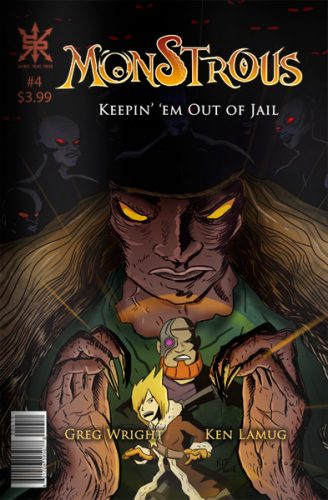
How did you get together with Source Point Press?
I’ve known the people at Source Point Press for years, and when Ken and I had the first four issues completed, his agent was shopping the project around. Source Point Press approached me to see if we could work something out, and it was an excellent fit between their brand and what we’re doing. All creators should, I think, work on their network. Keep meeting people. Keep talking to people. Be polite. Be someone others want to work with.
Sometimes I hear people ask: “How do I break into comics?” And I almost always answer: “Dang. Just be one of the people others are not trying to keep out of comics.” That sound flippant, but it’s also true. Be professional, reliable, quick, and friendly. Be the type of person you’d like to work with, whatever that means to you. Greedy people don’t get far. Ditto people who make excuses or spread negativity, etc. Talk. Interact. Put yourself out there!
Comics is an amazing collaborative medium. Tell me a little about working with Ken Lamug.
Working with Ken Lamug is wonderful! He gets where I’m coming from with the scripts and comes up with fantastic art. There are rarely any hiccups in the communication and/or collaboration. Everyone should go check out his children’s illustration work, too. There is some tonal overlap with Monstrous, but it’s all still very different and wild and fun.
Fun fact: Ken Lamug lives in Las Vegas, and I live in Michigan. We have talked extensively via Twitter messages, e-mails, and phone calls, but we have never met each other face to face. I’m sure that we will eventually, but things are going so well now I’d worry about blowing it.
Earlier in the working relationship, he would send some process images and sketches, and I would send him outlines and notes. Now, we mostly exchange finished products, as we really trust each other and trust ourselves.
Plus, I don’t know if I’ve said it extensively enough here, but Ken Lamug is an absolute animal. He does it all: pencils, inks, colors, letters, covers, design work. He’s 100% fantastic, and I’m lucky to work with him.
If you could go back in time ten years, what advice might you have for your younger self? Something you wish you knew?
I’d probably make fun of whatever outfit I was wearing ten years ago.
Seriously, I would tell myself not to get so attached to things that are doomed not to work out. I know that sounds like good advice for everyone, but I get altogether too worked up about things that don’t turn out like I’d hoped, everything from jobs to creative projects to relationships. With the creative stuff, at least, that is part of the path. As a writer, I need to keep writing. I have to write more stuff than will make it to the marketplace. That’s just how the process works.
It’s a little heartbreaking at times, though. “I really want this thing to get finished and into people’s hands!” A high percentage of the time, for a variety of reasons, that scenario doesn’t work out. So make another thing. When I hear about creative people talking about working on one thing for years—decades, sometimes—I just feel sad. Keep using your time to create different things, and eventually one of them will catch. Every new idea you can offer increases your odds.
Anything else I wish I knew ten years ago? Appreciate your hair, younger Greg. You’re going to lose most of it in the future.
Do you have any upcoming projects? Anything you’d like to promote? Anything else that you’d like people to know about you (Hobbies? Passions? Favorite TV Show)?
I do! I’m excited that there is a second Wild Bullets on the way, more Monstrous, and another Holliston graphic novel. I have some other projects, too, but they’re in the early stages. Some movie stuff, some comics stuff. I hope I’m pulling off an air of mystery here, as opposed to just an air of vagueness…
All my hobbies involve sitting.
Where’s the best place to find out more about Monstrous and the rest of your works?
People can check out my website: www.gregwrightcomicbooks.com
They can also find me on Facebook: www.facebook.com/gregwrightcomicbooks
And I have two Twitter accounts: @GregHenchman and @GregWrightBooks
Monstrous is available at Amazon and Barnes & Noble, and all my comics can be purchased directly from Source Point Press: http://sourcepointpress.storenvy.com/products
For those who like prefer digital copies to physical copies, all my comics are available digitally through Comixology, Drive Thru Comics, and ComicsBlitz.
The website for Monstrous is www.monstrousworld.com
Thanks for taking the time to hear me out! I’m grateful for this opportunity.
See you all in Frankenstein’s Europe, folks. Let’s get MONSTROUS!
***
Greg Wright has written several comic books: Monstrous, Wild Bullets, and Holliston: Friendship Is Tragic.
Greg earned a Ph.D. in American Literature and Film from Michigan State, and his award-winning fiction has appeared in a variety of journals. He has taught screenwriting, media studies, creative writing, and composition.
If he had a castle with a secret passage, he’d probably tell everybody and make it just a regular passage.
***
I’d like to thank Greg Wright for taking the time to answer my questions!
***
John McGuire
The Gilded Age Kickstarter is still going on. Check it out on Kickstarter here.

John McGuire is the creator/author of the steampunk comic The Gilded Age. Want to read the first issue for free? Click here! Already read it and eager for more?
Click here to join John’s mailing list.
His prose appears in The Dark That Follows, Theft & Therapy, There’s Something About Mac, Hollow Empire, Beyond the Gate, and Machina Obscurum – A Collection of Small Shadows.
He can also be found at www.johnrmcguire.com.
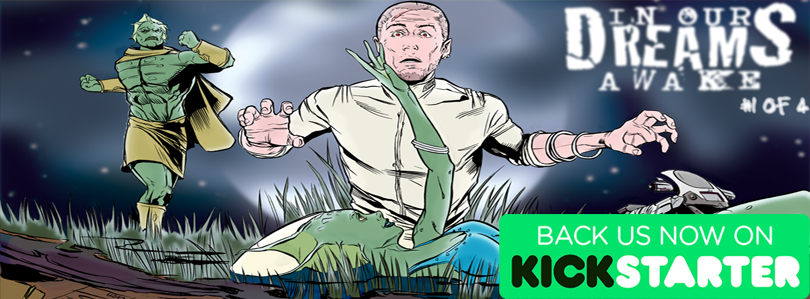

































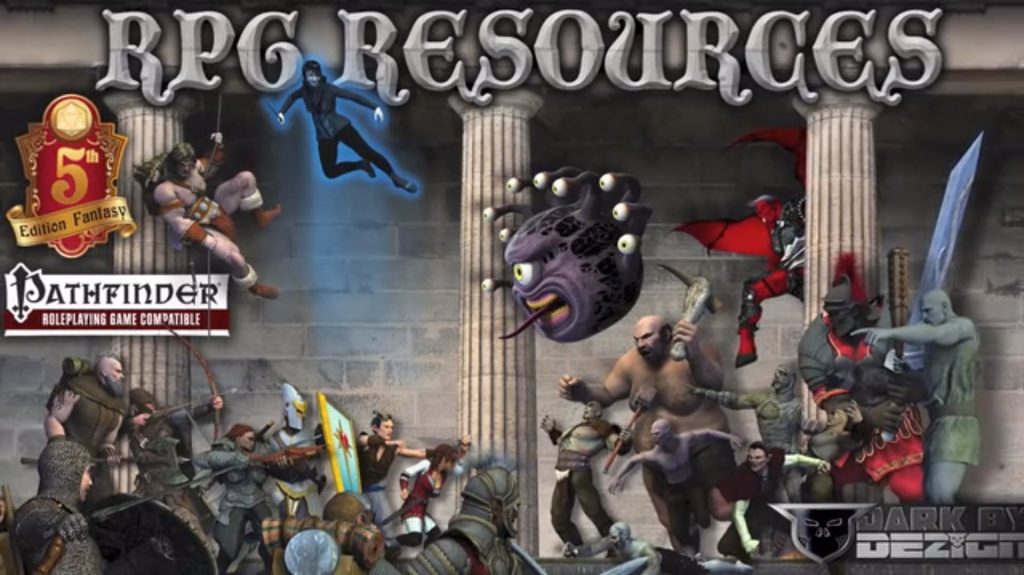


















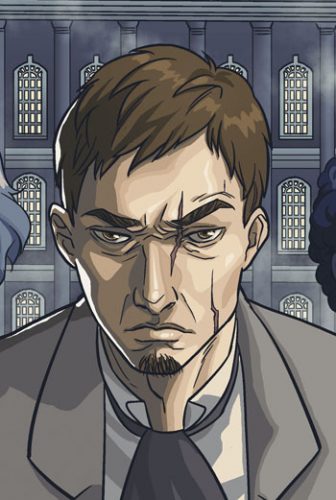











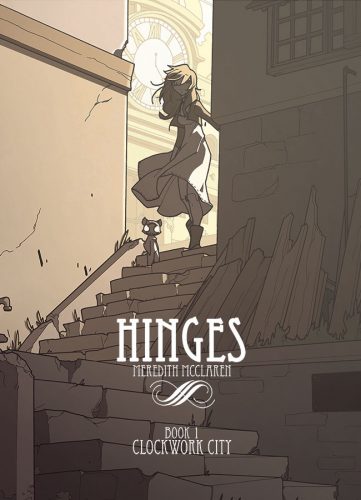










 How do you manage your daily/family life with your creative work? Is this your 9 to 5 or is this your 10 to 2?
How do you manage your daily/family life with your creative work? Is this your 9 to 5 or is this your 10 to 2?





 Tell us about yourself, where you’re from and what you love.
Tell us about yourself, where you’re from and what you love.







 Not sure if I really have a preference. I’ve pretty much written in every conceivable genre, from mysteries, science fiction, horror, comedy, westerns, and over two dozen children’s books. Ray Bradbury was a great friend and mentor, and he always stressed remaining flexible, which is crucial for the survival of a full-time writer like me. Happily, I’ve be able to write some of the industry’s most popular characters, such as Superman and Batman, Sherlock Holmes, Popeye the Sailor, and Tarzan of the Apes. I’m a very lucky guy.
Not sure if I really have a preference. I’ve pretty much written in every conceivable genre, from mysteries, science fiction, horror, comedy, westerns, and over two dozen children’s books. Ray Bradbury was a great friend and mentor, and he always stressed remaining flexible, which is crucial for the survival of a full-time writer like me. Happily, I’ve be able to write some of the industry’s most popular characters, such as Superman and Batman, Sherlock Holmes, Popeye the Sailor, and Tarzan of the Apes. I’m a very lucky guy.




 I’ve been looking forward to this interview for the last several weeks. Bekah Shambrook, daughter of author (and friend)
I’ve been looking forward to this interview for the last several weeks. Bekah Shambrook, daughter of author (and friend) 















